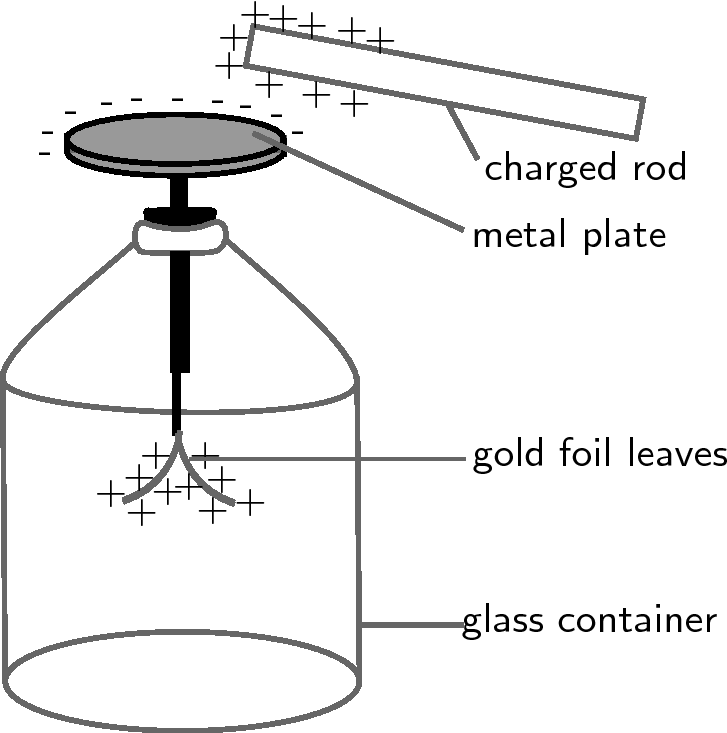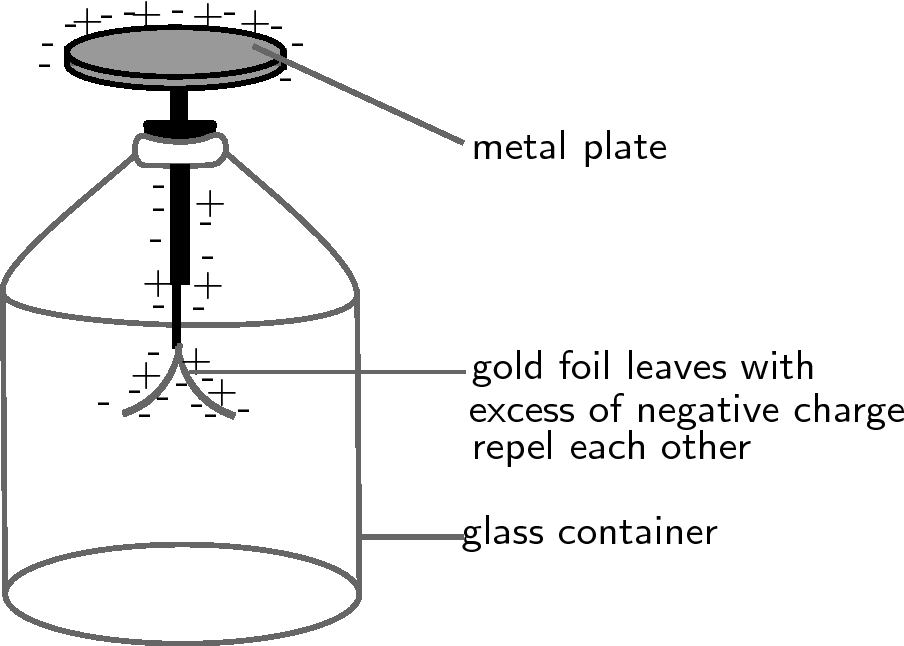| << Chapter < Page | Chapter >> Page > |
The electroscope is a very sensitive instrument which can be used to detect electric charge.A diagram of a gold leaf electroscope is shown the figure below. The electroscope consists of a glass container with a metal rod inside which has 2 thin pieces of gold foil attached. The other end of the metal rod has a metal plate attached to it outside the glass container.

The electroscope detects charge in the following way: A charged object, like the positively charged rod in the picture, is brought close to (but not touching) the neutral metal plate of the electroscope. This causes negative charge in the gold foil, metal rod, and metal plate, to be attracted to the positive rod. Because the metal (gold is a metal too!) is a conductor, the charge can move freely from the foil up the metal rod and onto the metal plate. There is now more negative charge on the plate and more positive charge on the gold foil leaves. This is called inducing a charge on the metal plate. It is important to remember that the electroscope is still neutral (the total positive and negative charges are the same), the charges have just been induced to move to different parts of the instrument! The induced positive charge on the gold leaves forces them apart since like charges repel! This is how we can tell that the rod is charged. If the rod is now moved away from the metal plate, the charge in the electroscope will spread itself out evenly again and the leaves will fall down because there will no longer be an induced charge on them.
If you were to bring the charged rod close to the uncharged electroscope, and then you touched the metal plate with your finger at the same time, this would cause charge to flow up from the ground (the earth), through your body onto the metal plate. Connecting to the earth so charge flows is called grounding . The charge flowing onto the plate is opposite to the charge on the rod, since it is attracted to the charge on the rod. Therefore, for our picture, the charge flowing onto the plate would be negative. Now that charge has been added to the electroscope, it is no longer neutral, but has an excess of negative charge. Now if we move the rod away, the leaves will remain apart because they have an excess of negative charge and they repel each other. If we ground the electroscope again (this time without the charged rod nearby), the excess charge will flow back into the earth, leaving it neutral.

Charge is measured in units called coulombs (C) . A coulomb of charge is a very large charge. In electrostatics we therefore often work with charge in microcoulombs ( ) and nanocoulombs ( ).
An object has an excess charge of . How many excess electrons does it have?

Notification Switch
Would you like to follow the 'Siyavula textbooks: grade 10 physical science [caps]' conversation and receive update notifications?